Selective Breeding: How Farmers make Food Better
6 minute read
Updated on: 14 Dec 2020
For thousands of years, farmers have been adjusting the traits of crops and livestock through a process called selective breeding.
How does selective breeding work?
- Farmers select parents with desirable characteristics and breed them together.
- From their offspring, they again choose those with the best combination of traits and the process continues over many generations
.
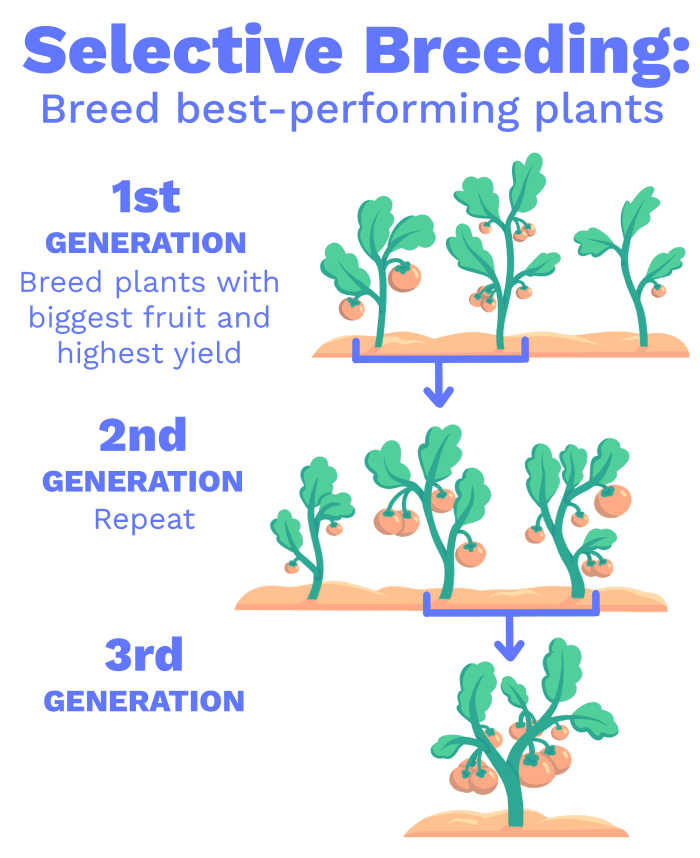
Selective Breeding
Using selective breeding, farmers have converted wild plants and animals into the crops and livestock we use today.
In the past, farmers had to rely on outward appearances for selective breeding. Nowadays, farmers use much more efficient, scientific breeding techniques
. Before we look at these techniques, let’s find out how traits are passed from one generation to the next at a molecular scale.
How are traits passed on from one organism to the next?
Just like humans, plants and animals inherit traits from their parents. These traits are encoded in their DNA: a molecule found inside almost every living cell
.
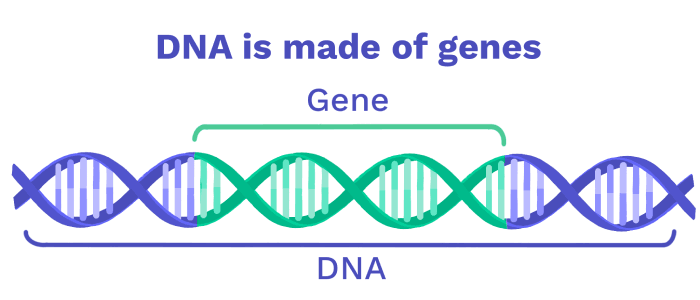
DNA and genes
The sum total of an organism’s DNA is called its genome . The genome is split into regions called genes, and these genes each contain a sequence of DNA. DNA molecules are made up of a series of molecular “letters” that tell the cell how to make a specific protein
. In other words, DNA acts like a set of instructions that enable cells to assemble the building blocks of all living things!
We inherit half of our genes from each parent. However, the specific combination of genes we inherit is almost completely random. This means that DNA is mixed up with every generation
.
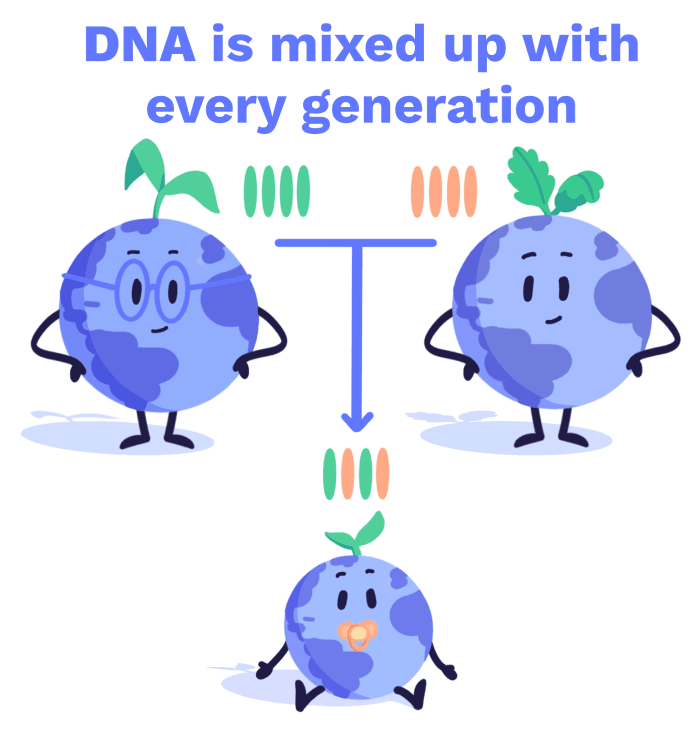
DNA Inheritance
Some traits are controlled by many different genes, and we might not inherit them all. Even if we do inherit all the genes for a specific trait, we still won’t necessarily show it because many traits are also influenced by our environment
.
So, how can understanding DNA be useful in agriculture?
How can modern technology improve selective breeding?
Modern genetic techniques allow farmers to identify the specific gene (or genes) that controls a desirable trait. Once identified, the gene can be tracked in the plant or animal’s offspring
.
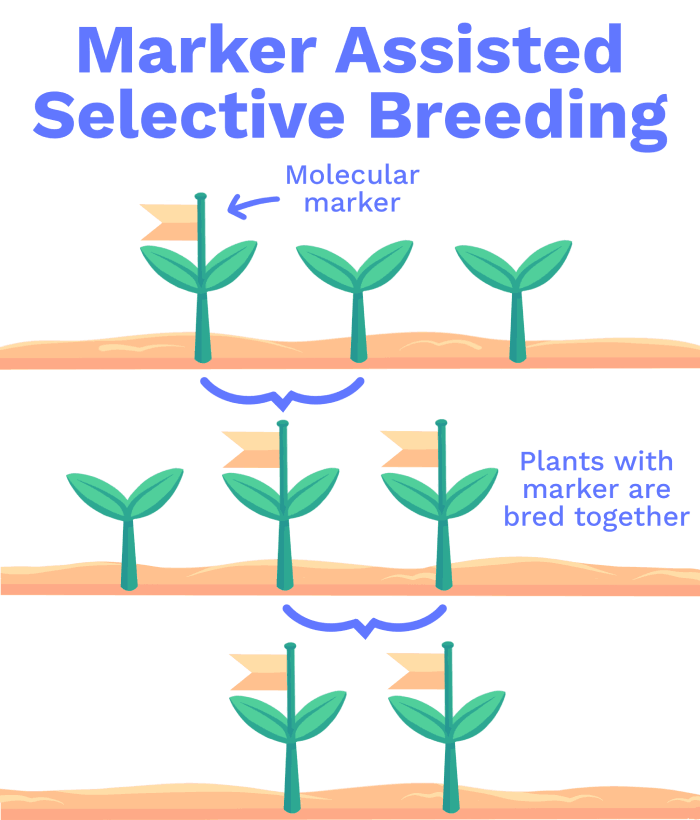
Marker Assisted Selective Breeding
Using these techniques, breeders can quickly identify which organisms have desirable genetics without having to wait for them to reach adulthood and display specific traits. This is particularly useful for traits that are difficult to measure, such as disease resistance, or those that are largely controlled by the environment
.
It also means that multiple genes can be identified at the same time. This makes it easier to select for traits controlled by several different genes, or to select organisms with a combination of different traits
.
However, even with these molecular tools, selective breeding can only get us so far.
What are the limitations of selective breeding?
In most cases, a trait can only be bred into a population if it already exists within a species. Therefore, selective breeding is limited by existing genetic variation.
This is one reason why maintaining genetic diversity in nature is important: traits found in wild relatives can be bred into crop plants to help them respond to changing climatic conditions.
However, even if the gene for a desired trait is present in a population, and can be easily inherited, selective breeding is still a slow process because it requires selection over many generations.
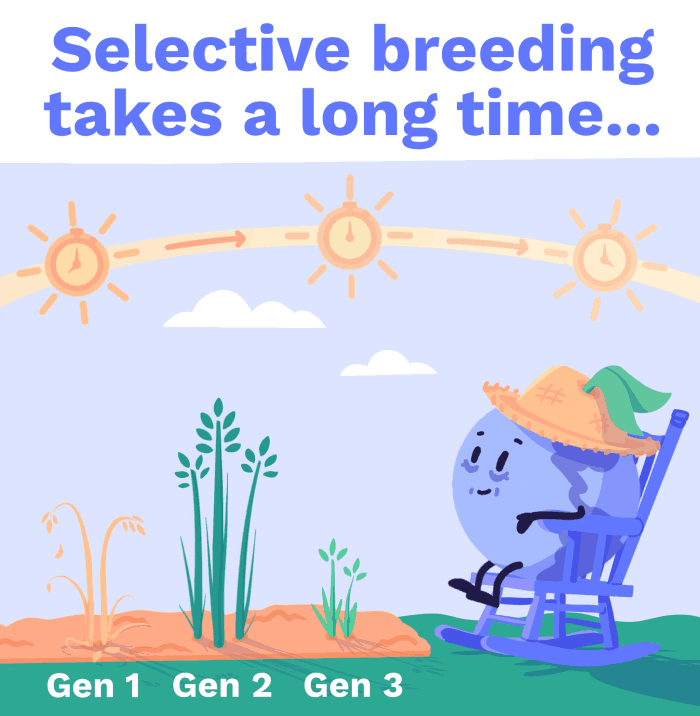
Selective breeding takes a long time
It may also be difficult to separate target genes from less desirable ones. In other words, if an organism inherits the desired gene, it is very likely to inherit the less desirable one too.
Conclusion
Farmers have been tampering with the DNA of crops and livestock to improve their characteristics for thousands of years. Modern genetic techniques have made this process of selective breeding faster and more precise. However, even with these advances, selective breeding is still a slow process that takes place over many generations.
But what if we could change the DNA of crops and livestock without having to rely on generations of selective breeding? Next chapter!
Next Chapter